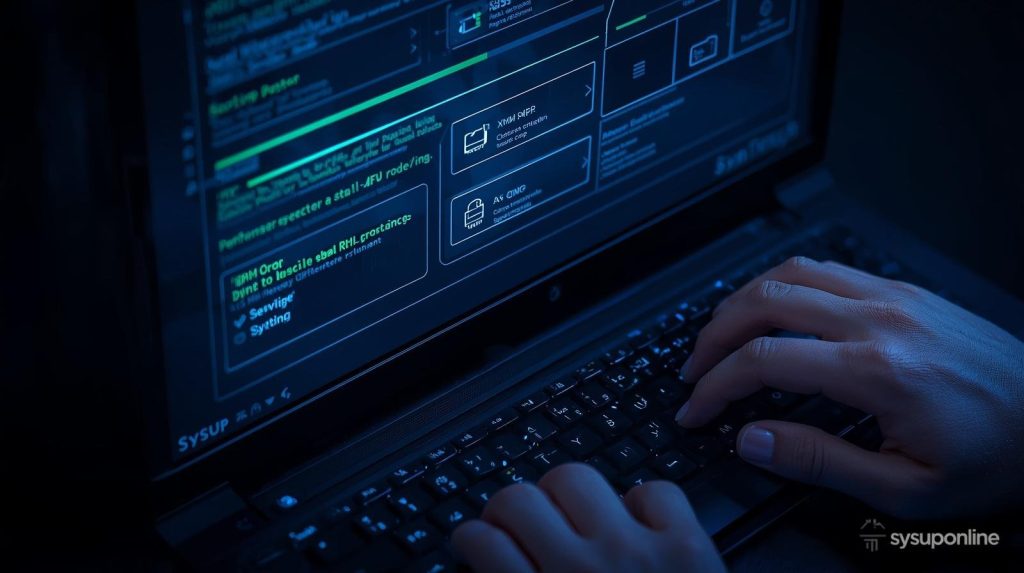
When you start your computer, one of the first systems that comes into play is the BIOS (Basic Input/Output System). This firmware controls how your hardware interacts with the operating system and determines the overall stability and performance of your PC. While most users never look beyond the default BIOS configuration, optimizing a few key settings can significantly boost system speed, reduce boot time, and improve overall efficiency.
In this guide, we’ll walk you through the important BIOS settings that can help you get better performance from your computer.
Why BIOS Settings Matter
The BIOS is like the bridge between your computer’s hardware and software. Every time you power on, it performs a POST (Power-On Self-Test) to check memory, processor, storage, and other components. Once it verifies everything, it hands control over to the operating system.
By customizing the BIOS, you can:
- Optimize how your CPU and RAM handle workloads.
- Improve boot speed.
- Enable or disable hardware features for efficiency.
- Maximize compatibility with newer operating systems.
However, it’s important to proceed carefully—incorrect changes can cause instability or even prevent your system from starting.
Key BIOS Settings to Optimize
1. Enable XMP or DOCP for RAM
Most RAM sticks are capable of running faster than their default speeds. To take advantage, enable XMP (Extreme Memory Profile) on Intel-based systems or DOCP (Direct Over Clock Profile) on AMD-based systems. This ensures your RAM runs at its rated speed, providing noticeable improvements in multitasking and gaming performance. Always check your motherboard compatibility before enabling XMP/DOCP.
2. Adjust Boot Order
If your PC takes a long time to boot, it may be because of unnecessary boot device checks. In the BIOS, set your primary storage drive (usually SSD or NVMe) as the first boot device. This reduces delays during startup and gets you to your operating system faster.
3. Enable AHCI Mode for Storage
If you are using SSDs, make sure AHCI (Advanced Host Controller Interface) is enabled. This mode improves the speed and efficiency of modern drives compared to the older IDE mode. AHCI also unlocks support for features like Native Command Queuing (NCQ), which optimizes how data is read and written.
4. Disable Unused Hardware
Most BIOS menus allow you to disable unused ports or features like onboard audio, LAN, or legacy USB controllers. Turning off unused hardware can free up system resources and shorten boot time. This step is especially useful for advanced users who want to squeeze out every bit of performance.
5. Enable Secure Boot and Fast Boot
Secure Boot ensures that only trusted software loads during startup, which enhances security and stability. Fast Boot minimizes hardware checks during startup, drastically reducing boot times. Just make sure your operating system supports these features before enabling them.
6. CPU Performance Tweaks
Modern CPUs often come with power-saving modes that can reduce performance slightly. By enabling features like Intel Turbo Boost or AMD Precision Boost, you allow the processor to dynamically increase clock speeds when needed. You may also explore options such as enabling additional CPU cores or disabling unnecessary throttling. However, avoid overclocking unless you are confident, as it can lead to overheating or instability.
7. Fan and Thermal Management
Keeping your system cool is just as important as speeding it up. Many BIOS interfaces include fan curve controls that let you adjust how aggressively your cooling fans respond to rising temperatures. A well-optimized cooling setup can improve performance and extend the lifespan of your components.
Safety Tips Before Making Changes
- Update your BIOS: Manufacturers release updates that fix bugs and improve compatibility. Make sure you are running the latest version.
- Document default settings: Before changing anything, note the current configuration. This allows you to restore defaults if needed.
- Change one setting at a time: This makes it easier to identify the cause if something goes wrong.
- Don’t overdo it: Overclocking or disabling too many features can cause crashes or system instability.
Final Thoughts
Optimizing BIOS settings can give your computer a noticeable performance boost without spending money on new hardware. By enabling XMP for RAM, adjusting boot order, activating AHCI, and fine-tuning CPU features, you can enjoy faster boot times, smoother multitasking, and more stable performance. Always proceed with caution, make small changes at a time, and keep backups of your data.
Taking the time to configure your BIOS properly is one of the simplest yet most effective ways to get the most out of your PC.